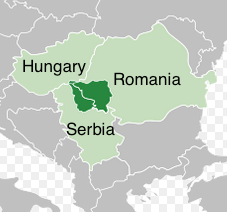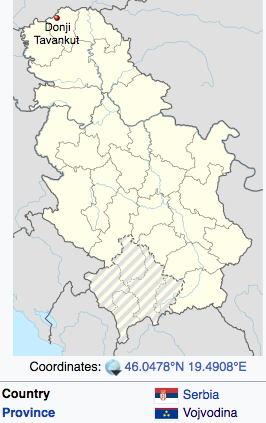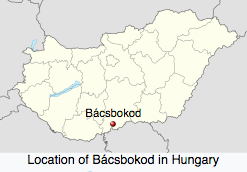*a Living dance is a 1st Generation dance that is still performed in the country of origin (or immigrant communities) as part of a social event like a wedding where others can participate (not for an audience) by people who learned the dance informally (from friends and relatives by observation and imitation, not in a classroom situation). For more information, click here and here.
MAH-loh KOH-loh – ‘small kolo’ (circle dance)
Ron Houston, in his extensive article on Malo kolo in the 2012 Folk Dance Problem Solver, says “The magic of Malo kolo is difficult to experience, especially with our 3-minute phonograph recordings.” He then quotes ‘kolo’ John Filcich (1953): “Malo kolo starts out very slowly and mildly, the dancers first fitting the ‘step, close, step, close’ as if to see if it will fit the music. Then it gains momentum and the dance becomes hoppy as the basic step is introduced. Footwork becomes more intricate and the dancers more excited as the music moves into more exotic arrangements, at which times the men stamp their feet in a syncopated rhythm and the women yell in near-scream tones an exultant EE-YAH-EE-YAH-EE-YAH-YAH or a jubilant EEE-YAH! When the music suggests it, the dancers move towards the center of the circle in evern closer quarters, the shoulders touching, the arms enveloping a tight circle, all possible since the steps are uniform and the dancers form a harmonious unit.
In 1993, Dick Crum wrote: “It is impossible to fully convey the electric charge that surged through a noisy hall when the musicians struck the eight solid, rousing chords that launched Malo kolo‘s sparkling melody. Gleeful shouts burst out of the mass babble, and chairs and tables were scuffled aside as the dancers got up and moved onto the floor. No other kolo, with the occasional exception of Zikino kolo, had this kind of power.
There were occasions when Malo kolo seemed to go on forever, especially late in the evening of a wedding reception. As the excitement mounted and the adrenalin flowed, the dancers pulled into a tight, perspiring huddle, gripping their neighbors’ waists or shoulders, exchanging shreiks of exhilaration and intensifying their footwork.
The musicians customarily speeded up the music at this point, modulated into a higher key, and sometimes stepped down from their platform and pushed into the center of the vibrating circle. They often moved around the inside of the kolo, stopping in front of especially good dancers, inspiring them to outdo themselves. This climactic communion of musicians and dancers, music and movement, was the apogee of U.S. kolo dancing in the 1950’s.”
Source of Malo kolo – the BANAT
Dick Crum in 1954 wrote: “A count of the kolos now done in the U.S. will show that about 80% are of the old ballroom type. [For more about ballroom kolos, see https://folkdancefootnotes.org/dance/dance-information/ballroom-kolos-serbia-croatia/ ] About the only “folk” kolos brought over were Malo, Veliko, Erdeljanka, Milica and the Drmesh.” So where did this “folk” kolo come from from?
The Banat is a region spanning Serbian Voivodina, Romanian Banat, and a bit of Hungary. Before 1918, all of it was within Hungary, and had been for generations, but the ethnic composition included a majority Serbian, Croatian and Romanian population. For more on Banat, click https://folkdancefootnotes.org/culture/ethnicity-history-geography/banat-region-romania-serbia-hungary/

Again quoting from Ron Houston’s 2012 Folk Dance Problem Solver “Banat refers to an area composed of parts of Hungary, Romania, and Serbian Vojvodina, containing people of those and several other ethnic backgrounds. Each group brought dances and picked up more dances from the other groups, and I believe that Malo kolo represents Hungarian influence. Think about it. Dances with the so-called ‘kolo step’ occur mostly in north Serbia. Yet as the downbeat double-csárdás step, they occur throughout Hungary. The name of a family of variations for Malo kolo is cifra, the same name as for a Hungarian dance motif. Other variations incorporate heel-clicks, so typical of the Hungarian motifs called bokázó. So draw the obvious conclusion. The dance’s origin, however, does not detract from its use as a symbol of Serbian nationalism. Quoting John Filcich (1953, Igra Kolo): “It is in this dance that the height of Serbian vitality, jubilant spirit, unity, and national pride is demonstrated.”
Below are some YouTubes of traditional Malo kolo dancing in the Banat.


MALO KOLO TODAY
Ron Houston again “As far as I know, and judging by the documentary record, Malo kolo, so fundamental to to true Balkan dancing, never enjoyed wide popularity among international folk dancers or even among what Vyts Beliajus called ‘Kolomaniacs‘. Perhaps it was too simple, involving just 8 beats. Perhaps it appeared to be too simple, involving subtleties that did not show well from the stage. Perhaps it was too difficult, involving movements (e.g. triple bounces) that some dancers, especially those over 19 years old or 110 pounds, could not really perform…”
However among Serbs Malo kolo is still popular, both as a simple wedding dance, and as a more complex performance dance.
COMMENTS:
Sharp-eyed John Uhlemann: several of the examples here were not Malo Kolo, but just “kolo” (what Americans call u sest). One Vlach band in the video began with that and then went into Vlainja, which is another family of dances. The last Vlach video showed the way Vlainja is now done (they just call it “danca”) – the same pattern of Vlainja, but with all steps being done to the right, and slower than the traditional Vlainja. I suspect it evolved to fit dancing on carpet in high heels…Don replies: Caught me napping! I read the YouTube title Malo and didn’t look closely enough at the dancing. 3 offending YouTubes have been removed. Thanks, John, for the correction.
